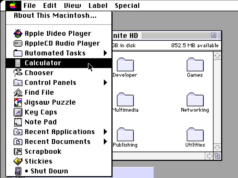
Video doorbells have become quite common since their arrival on the market 10 years ago: 20% of American households currently use one. The cost of owning and operating a video doorbell has plummeted, so how does Ring, which offers relatively expensive video doorbells and an almost required subscription plan, remain on top of the market? After testing the new Ring Battery Doorbell Pro ($229.99 plus subscription), I think the answer is that Ring continues to solve some of the most common problems with video security.
Ring’s software is the least buggy of any doorbell or security camera I’ve tried. It connects quickly when notified; allows you to interact with whoever is at the doorbell; and grabs clips that respect the zones you’ve set up. Ring has added new functionality to the Doorbell Pro, and features exceptional video quality—but I believe it’s Ring’s ability to deliver on the most basic needs of a video doorbell that keep it so popular.
Traditional details and lots of accessories
Over the last year, I’ve tested doorbells from Google, Aqara, and Blink; while each had pros and cons, they helped prime me to appreciate the new Ring. In the 10 years of Ring’s market presence the design of the doorbells has barely shifted, and the Ring design is the most stately and substantial of the video doorbells out there. Ring wraps their doorbells in brushed metal with black plastic and metal accents—they tend to look and feel more substantial. The Doorbell Pro continues that tradition: The top half of the doorbell is shiny black plastic and metal, and the bottom half is wrapped in brushed silver metal (that you can swap for another metallic finish). The large circular button with blue light that Ring is known for is present, and the Ring ships with a wedge mount for your door, but there are tons of mounts available online if you need a different kind. There’s also a solar charger available now as well as indoor chimes.
A more labor-intensive installation results in a more secure doorbell
While Rings aren’t hard to install, they are harder to install than many of the brands I’ve mentioned above. In all of those cases, the doorbells mount very simply, but also insecurely. The Ring has always had a mounting system that is supposed to provide security for the doorbell itself, and ships with its own specialty screwdriver. The doorbell itself has to catch onto the mounting plate and is then secured with a number of small screws to the mounting plate. Physical installation took about 10 minutes, and setup took another 15. Once the Ring app is installed and the doorbell was plugged in via USB, the app easily found and added the doorbell. You can spend a lot of time configuring the Ring, but I advise you to live with the doorbell for a few days to see what settings you need.
Ring continues to conquer response lag time
Once up and running, Ring will begin sending you a raft of notifications. There are two types—notifications of activity in front of the doorbell and of the doorbell actually being rung. In both cases, you’re likely to decide to click on the notification and see what the activity is. This is where Ring differentiates itself from other doorbells: With all the other brands, I experienced connection errors, delays, and time outs. Ring, on the other hand, connects quickly and painlessly to show you the clip of what happened—or the live view, so you can monitor or interact in real time. While there’s always a slight delay based on your wifi signal, Ring’s response time is far and away the best of all I’ve tried.
This means that the other feature people buy video doorbells for—interacting with someone at your door—works better on a Ring than other models. That response time is important—your UPS driver isn’t waiting around for a 30-second response delay.
Subscriptions are pricey and essential to using the doorbell
Seeing those clips (not the live view) is dependent on having a Ring subscription. While the subscription is optional, not being able to watch those clips renders the Ring almost worthless, in my opinion. The doorbell ships with a free 30-day trial, but once that expires, it’s on you to re-up. Plans start at $4.99 a month for one device and quickly go up from there. Generally, I prefer products that do not require these subscriptions and allow you to store clips locally, like Eufy.
Great video clarity with an assist from new features
The clarity on the new Ring is top notch, and it’s not just the resolution, which clocks in at a reasonable HD 1536p. Ring has designed the lens to get a complete head-to-toe view of whoever is at your door, which means you can also see packages waiting at your door. I was surprised how useful this was. That clarity extends to far-view video—you get remarkably clear details about the delivery person even as they get out of the car. I was impressed at how much better the Ring had gotten at respecting the zones I set up in the app to ignore or pay attention to. I was easily able to set it so I wasn’t bombarded with notifications of people walking by the house—a previous issue I’d had with doorbells. This is likely due to Ring’s 3D mapping—a new feature—and Bird’s Eye View, which uses motion detection to determine if the action in front of it is relevant to you or not. I was also impressed by the night vision, which provided clear, color images even once I turned off the porch light—without the graininess you usually see. Some of the other doorbells I’ve tested provide higher resolution, but I hardly noticed the difference.
Ring has worked hard to layer on new features. The most useful is that Ring can now use AI to help tell if there’s a package at your door. If you tend to leave things at your door, this feature works less efficiently, but it did correctly identify packages most of the time if they were left directly in front of the door, and only twice misidentified a neighborhood cat as a package. Additionally, the doorbell will work with your other Ring devices to track someone’s movement over your property.
Batteries are now more accessible and more powerful
A real upgrade, in my opinion, was the battery. While you can, of course, buy a wired version of the doorbell, an awful lot of people buy the stick-up battery version, and previous incarnations have required unmounting the whole doorbell to recharge the battery. The process was arduous enough that I was apt to leave the doorbell uncharged often. Now you simply remove the metal faceplate and remove the battery, leaving the doorbell behind. This has two benefits, it’s a lot less work, and you can purchase a backup battery and swap them, so you’re never out a doorbell. The battery life has gotten much better, too. Over a month, the battery only lost one bar, remaining at 75% charge. For comparison, I used to charge my Ring once every eight weeks.
Bottom line: an expensive but superior video doorbell
There is simply no denying that the cost difference between Ring and competitors is substantial. This Ring model is $229 before the subscription, compared to a Blink doorbell, at $41.99 or Aqara at $119.99. There are lesser Ring models, like the Video Doorbell at $59.99 and Doorbell Plus for $119.99; you can get most of the benefits of the Pro at a lesser cost. Despite my hesitation on cost, there is just no denying that Ring delivers on the original premise of a video doorbell better than other brands—good-quality video of what is happening at the door, in real time.








